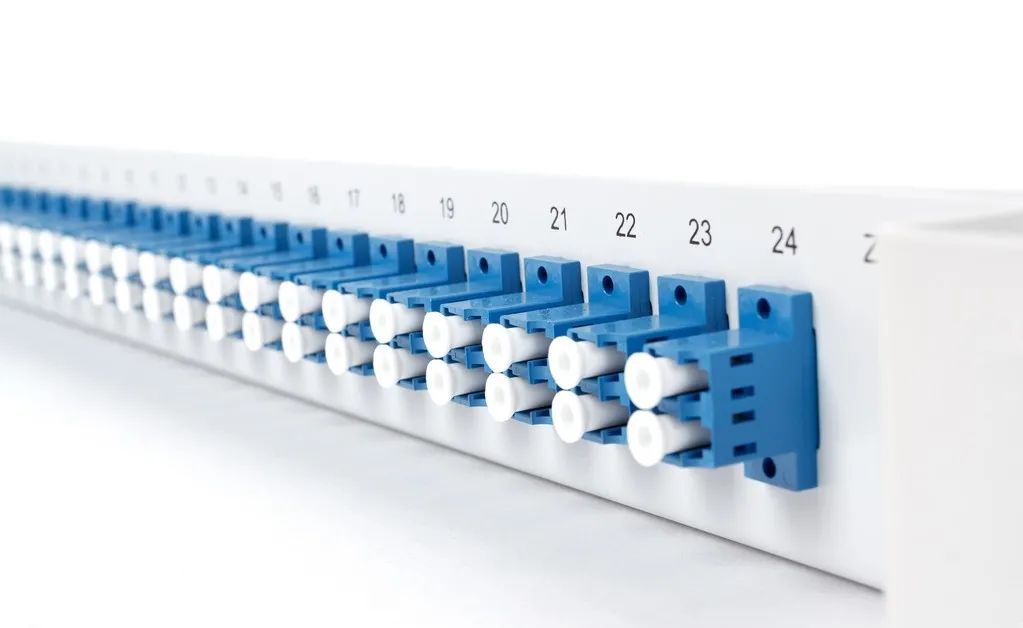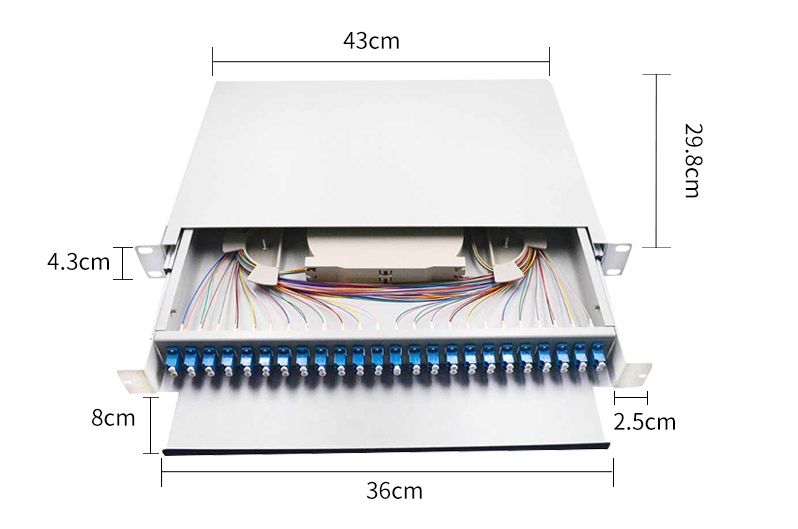
What is a patch panel
Equipment used for end-user lines or trunks and capable of provisioning and connecting them. The patch panel is the most important component in the management subsystem, and it is the hub to realize the cross-connection of the two subsystems of the vertical trunk line and the horizontal wiring. Patch panels are usually mounted on a cabinet or wall. By installing accessories, the patch panel can meet the needs of UTP, STP, coaxial cable, optical fiber, audio, and video. Distribution frames commonly used in network engineering include twisted pair distribution frames and optical fiber distribution frames. According to different places of use and uses, it is divided into two categories: main distribution frame and intermediate distribution frame.
The purpose of the patch panel
The positioning of the distribution frame is a modular device that manages the front-end information points at the central office. After the front-end information point cable (Category 5e or Category 6 cable) enters the equipment room, it first enters the patch panel, attaches the cable to the module of the patch panel, and then uses a jumper (RJ45 interface) to connect the patch panel and the switch…
Generally speaking, the patch panel is used to manage the equipment. For example, if there is no patch panel, the front-end information point is directly connected to the switch. If there is a problem with the cable, it will be re-wired. In addition, the management is also confusing, and multiple plugging and unplugging may cause damage to the switch port. The existence of the patch panel solves this problem, and better management can be achieved by replacing the jumper.
Usage and usage are mainly configured according to the total number of network points or the number of network points on the floor (and adjacent floors, depending on how the system diagram is designed). Different buildings, different system designs, and the distribution frame between the main equipment will be different.
The patch panel is the most important component in the management subsystem, and it is the hub to realize the cross-connection of the two subsystems of the vertical trunk line and the horizontal wiring. Patch panels are usually mounted on a cabinet or wall. By installing accessories, the patch panel can meet the needs of UTP, STP, coaxial cable, optical fiber, audio, and video. Distribution frames commonly used in network engineering include twisted pair distribution frames and optical distribution frames.

Why use a patch panel
1. From the design point of view
There is one requirement for integrated wiring, I don’t know if you have noticed it, that is, the information point requires that the data and voice points can be interchanged when necessary, that is to say, the same voice point can be selected by jumper without changing the wiring. Determine whether it is voice or data. In this way, the voice point and the data point are the same when wiring and the design are very convenient, and there is no need to consider them separately.
If cost is not an important consideration, connect all the information points to the rj45 patch panel, and then decide whether to jump to the switch or the voice patch panel through jumpers (it can be 110 or stg and other types of on the voice module). Of course, this is a design that does not consider cost, and it is also a design that completely does not consider whether the terminal is voice or data. There are very few practical applications. In most cases, the difference between voice and data is considered, and there are many specific methods.
2. From a construction point of view
There are many large-scale engineering information points. The use of a patch cord connection between the switching equipment and the wiring system can make construction management more convenient, and the cabinet will be very clean. After all, the jumper is much shorter. Testing is also much easier.
3. Management and maintenance
In fact, large users are very concerned about this aspect, and the patch panel can effectively improve work efficiency and reduce the time for error checking. It also provides a convenient and quick method for changing the usage mode of the terminal.
What are the advantages of patch panels?
- The traditional method of testing subscriber lines is done by manual operation. After the centralized online mode is adopted, the existing automatic test system can be used to test the subscriber lines of the remote office, so as to realize unattended or few people on duty.
- The computer operation can be combined with the computer integrated management system to realize the automation of operation.
- Centralized online can choose the shortest path to the nearest jumper, only 2-3m, saving a lot of jumpers. The traditional method of the jumper is generally more than ten meters or even dozens of meters.
- In the case of moving equipment, changing the line interface, engineering maintenance, etc., the traditional method needs to remove a large number of jumpers, and the work is heavy. The centralized online method can be completed only by computer operation, which reduces the wear of the card contacts, prolongs the life of the patch panel, and reduces the occurrence of obstacles.
- The patch panel jumper is completed in a centralized way, which avoids the confusion caused by multiple random jumpers in the traditional method, and makes the patch panel appearance beautiful and neat.

Several matters need attention when using an optical fiber distribution frame
The first thing to consider is the amount of fiber optic cable remaining: a certain amount of fiber optic cable should be reserved to ensure that a fiber-strength film is created on the patch panel chassis. This prevents the fiber from being pulled out of the patch panel and avoids excessive stress on the cable.
The second is its protective performance: the fiber optic distribution frame should provide sufficient protection for the connector to prevent accidental contact.
Finally, its suitability: the fiber optic patch panel should be able to allow the removal of existing connectors and the addition of new connectors or fibers, it must also be able to store and identify non-connector fibers from horizontal or trunk cables.
The above is all about what a patch panel is and why you should use a patch panel. In fact, a patch panel is a device used to standardize network wiring. It is generally used in network installations (such as local area networks, etc.). , used in conjunction with the switch and installed in the cabinet.
